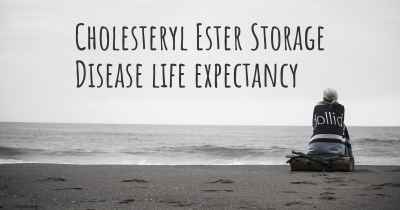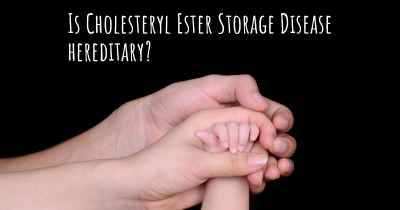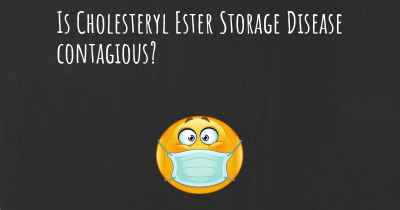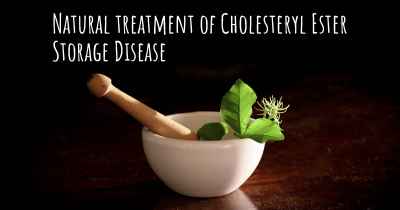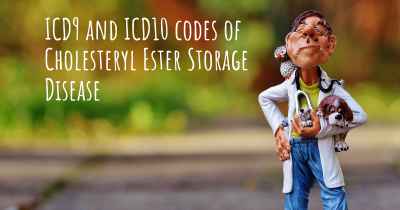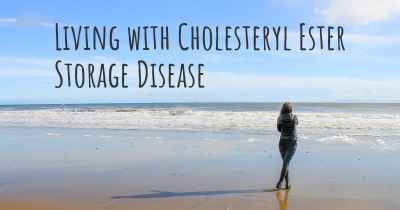Which are the symptoms of Cholesteryl Ester Storage Disease?
See the worst symptoms of affected by Cholesteryl Ester Storage Disease here
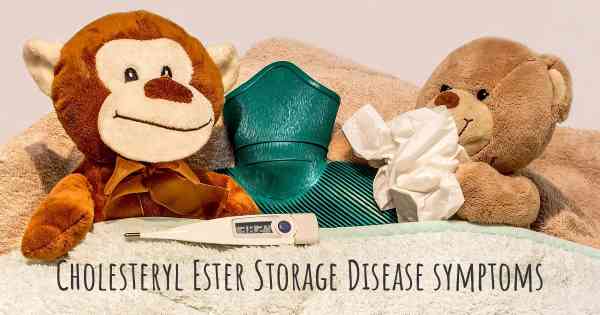
Symptoms of Cholesteryl Ester Storage Disease
Cholesteryl Ester Storage Disease (CESD) is a rare genetic disorder that affects the body's ability to break down and process fats properly. It is caused by mutations in the LIPA gene, which leads to a deficiency of the lysosomal acid lipase enzyme. This enzyme is responsible for breaking down cholesteryl esters and triglycerides in the body.
The symptoms of CESD can vary widely from person to person, and the age of onset can also vary. Some individuals may experience symptoms in infancy, while others may not develop symptoms until adulthood. The severity of the disease can also vary, with some individuals experiencing mild symptoms and others experiencing more severe complications.
One of the hallmark symptoms of CESD is hepatomegaly, which is an enlarged liver. This occurs due to the accumulation of cholesteryl esters and triglycerides in the liver cells. The liver may become firm and tender to the touch. In some cases, hepatomegaly can lead to liver dysfunction and liver failure.
Other common symptoms of CESD include:
- Hyperlipidemia: CESD can cause elevated levels of cholesterol and triglycerides in the blood. This can lead to atherosclerosis, which is the buildup of plaque in the arteries, increasing the risk of heart disease and stroke.
- Abdominal pain: Some individuals with CESD may experience abdominal pain, which can be caused by an enlarged liver or spleen.
- Splenomegaly: CESD can also cause an enlarged spleen, which may lead to abdominal discomfort or pain.
- Malabsorption: Due to the impaired breakdown of fats, individuals with CESD may have difficulty absorbing fat-soluble vitamins and nutrients, leading to deficiencies.
- Failure to thrive: Infants with CESD may have difficulty gaining weight and growing at a normal rate.
- Delayed growth: Children with CESD may experience delayed growth and puberty.
- Yellowing of the skin and eyes: In some cases, CESD can cause jaundice, which is characterized by yellowing of the skin and eyes.
- Pulmonary complications: Rarely, CESD can lead to pulmonary complications such as interstitial lung disease or pulmonary hypertension.
It is important to note that the symptoms of CESD can overlap with other liver and metabolic disorders, making diagnosis challenging. If CESD is suspected, genetic testing and enzyme activity assays can be performed to confirm the diagnosis.
Treatment for CESD focuses on managing symptoms and preventing complications. This may include:
- Enzyme replacement therapy: Some individuals with CESD may benefit from enzyme replacement therapy, which involves regular infusions of the missing lysosomal acid lipase enzyme.
- Dietary modifications: Following a low-fat diet and avoiding foods high in cholesterol and triglycerides can help manage symptoms and prevent complications.
- Monitoring and managing complications: Regular monitoring of liver function, cholesterol levels, and cardiovascular health is important. Additional treatments may be required to manage specific complications such as liver dysfunction or atherosclerosis.
In conclusion, Cholesteryl Ester Storage Disease is a rare genetic disorder characterized by the accumulation of cholesteryl esters and triglycerides in various organs, particularly the liver. The symptoms can vary widely, but commonly include hepatomegaly, hyperlipidemia, abdominal pain, splenomegaly, and malabsorption. Early diagnosis and appropriate management are crucial in improving outcomes and preventing complications.
